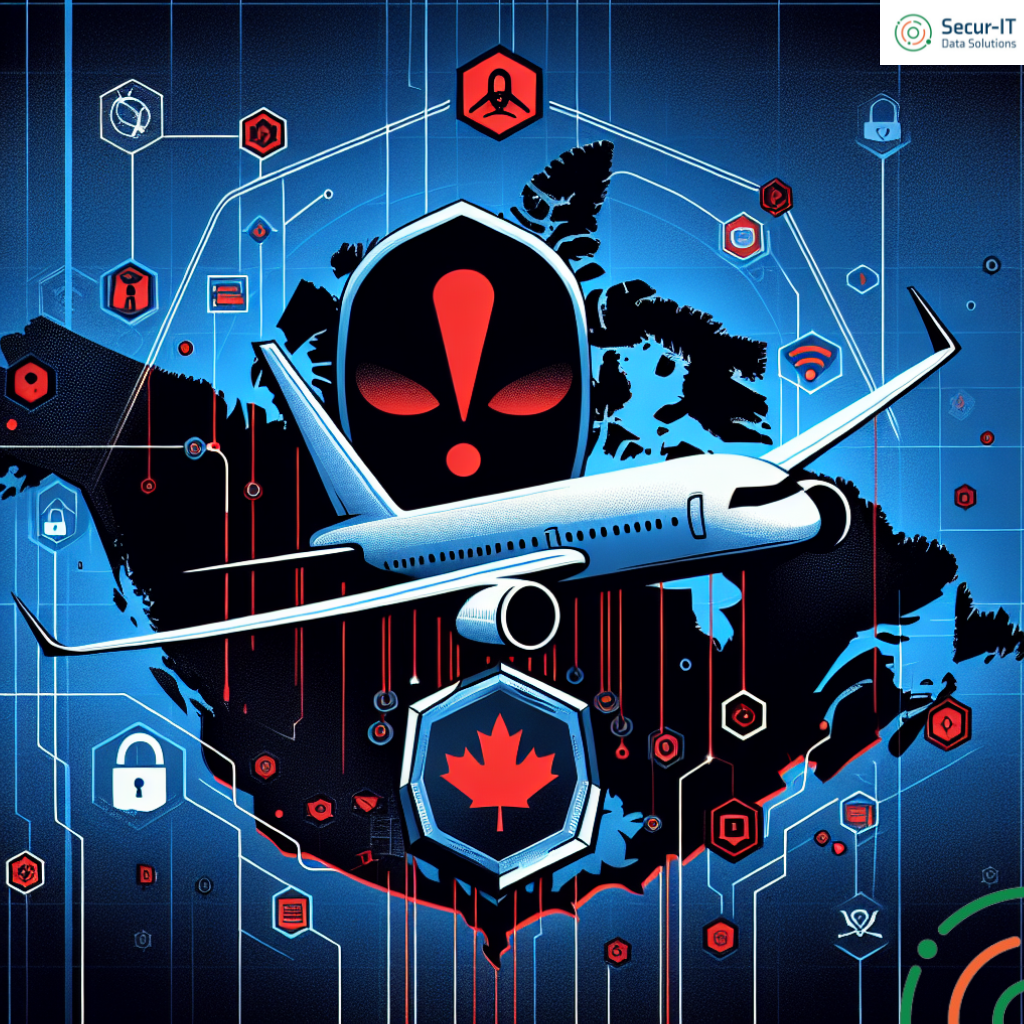
Canadian Airline Cyberattack: How to Protect Your Business is a critical topic following last week’s high-profile cyber incident targeting Canadian airline WestJet in June 2025.
This event spotlights the urgent need for robust cybersecurity not just for airlines, but for all businesses managing sensitive customer and operational data.
Recent Cyberattack on a Canadian Airline: What Happened?
In June 2025, WestJet, Canada’s second-largest airline, experienced a significant cybersecurity incident. The attack caused disruptions to WestJet’s website and mobile application, limiting access for users, while the airline’s flight operations continued unaffected. The breach affected internal systems but, as of now, there’s no confirmation that sensitive customer information was leaked. WestJet immediately began working with law enforcement and cybersecurity experts to contain the effects and investigate the incident.
How Hackers Breached Airline Security (Tactics Used)
Authorities and cybersecurity experts linked the WestJet cyberattack to a notorious group known as Scattered Spider. This group specializes in social engineering— psychological manipulation rather than technical hacking:
- Reconnaissance: They gather internal employee details through LinkedIn, data leaks, or previous breaches.
- Impersonation: Posing as staff, they contact IT help desks, claim urgent issues, and request account resets.
- Bypassing Multi-Factor Authentication (MFA): They deploy tactics such as SIM swapping, fake identity proofs, or emotional pressure to trick IT staff into resetting MFA or sending codes to devices controlled by the attackers.
- Gaining Initial Access: Using valid credentials, they log in and escalate privileges.
- Lateral Movement and Data Exfiltration: Once inside, they move through internal networks, aiming to access operational systems or sensitive information.
- Potential Ransomware Deployment: After exfiltrating data, they may threaten extortion or paralyze systems.
What Data Was Exposed in the Airline Data Breach?
As of late July 2025, airlines and investigators report intermittent issues and are still assessing the impact. There has been no public confirmation of a leak of highly sensitive customer data such as payment information, but access to internal systems and partial customer information cannot be ruled out pending ongoing forensics.
Why Airlines Face Growing Cybersecurity Threats
Airlines are increasingly targeted because:
- They hold vast stores of sensitive passenger, staff, and vendor data.
- Their digital operations involve many third parties and complex legacy systems.
- Service disruptions can directly affect millions, increasing the leverage of attackers.
- Social engineering exploits employees who may not expect cybercriminal precision.
7 Best Practices to Prevent Cyberattacks on Airlines and Businesses
- Mandatory Employee Cybersecurity Training
Regularly train staff—especially IT and helpdesk personnel—on social engineering tactics and strict identity verification. - Zero Trust Architecture & Access Controls
Implement “never trust, always verify” systems; limit privileges to just what is necessary per role. - Vigilant Security Audits and Threat Monitoring
Conduct frequent logs analysis and penetration tests to detect and address weaknesses. - Network Segmentation
Separate IT systems so a breach in one area cannot cascade to critical infrastructure. - Strong Multi-Factor Authentication with Out-of-Band Verification
Require secondary confirmation (call-backs, video verification) for sensitive changes, not just digital confirmations. - Third-Party Risk Management
Limit, review, and monitor access for all vendors and contractors. - Incident Response Planning
Have a well-documented, rehearsed cyber incident response plan so employees know their roles in a crisis.
How Secur-IT Data Solutions Can Safeguard Canadian Organizations
At Secur-IT Data Solutions, we help organizations in airline, transportation, and high-stakes sectors:
- Deliver employee training on social engineering and real-world phishing.
- Audit, design, and implement Zero Trust frameworks.
- Assess technology and procedures via simulated attacks and risk evaluations.
- Architect resilient systems with network segmentation and continuous monitoring tools.
- Ensure compliance with Canadian and international regulations.
- Prepare and test incident response procedures for rapid, effective action.
- Provide customized security solutions tailored to aviation and complex operational environments.
If your company is concerned about data breaches, ransomware, or social engineering,
Contact Secur-IT Data Solutions to schedule a cybersecurity assessment and turn today’s threats into your competitive advantage.
Sources
- WestJet Official Cybersecurity Incident Update
- Detailed Analysis of the June 2025 WestJet Attack
- FBI Alert on Scattered Spider Airline Campaign9
- CBC News: WestJet Cyberattack Coverage3
- Forbes Overview of Airline Industry Breaches
- Rescana: Technical Analysis of the WestJet Breach
- CTV News, Economic Times, and DarkReading Cybersecurity Coverage818

Krikor Tengerian is the CEO and founder of Secur-IT Data Solutions, a Toronto-based cybersecurity firm focused on helping Canadian organizations secure their infrastructure and critical systems. With over 25 years of experience across cybersecurity and IT infrastructure, he has supported organizations in hardening networks, protecting critical workloads, and aligning security controls with business and regulatory requirements.
Krikor actively shapes the direction and themes of Secur-IT’s educational content, collaborating with AI tools to structure, refine, and expand articles while providing the real-world context, use cases, and review to keep them accurate and practical for readers. He regularly shares insights on OT security, threat detection, incident response, and Canadian cybersecurity compliance to help industrial and commercial organizations better understand and reduce their cyber risk.